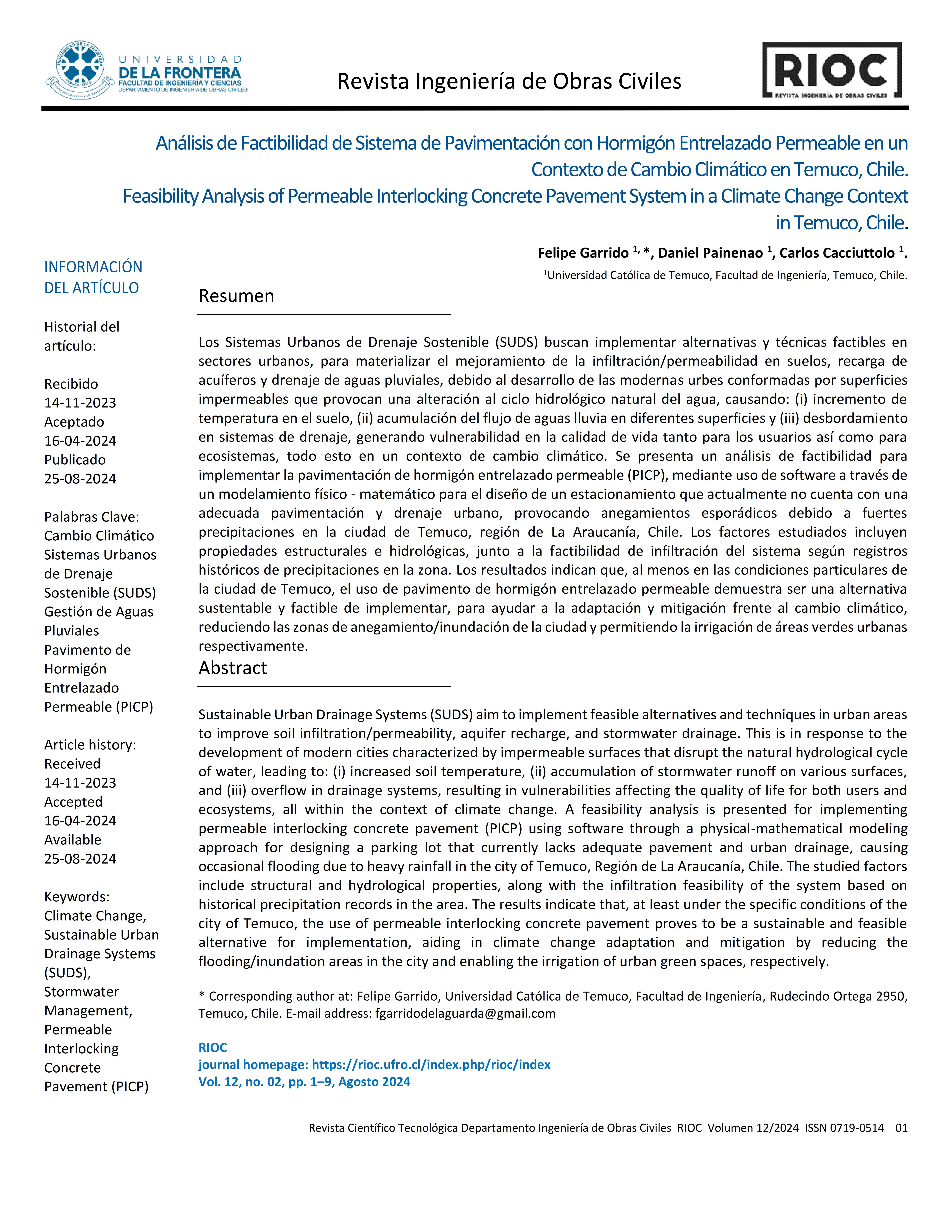Feasibility Analysis of Permeable Interlocking Concrete Pavement System in a Climate Change Context in Temuco, Chile
Keywords:
Climate Change, Sustainable Urban Drainage Systems, Stormwater Management, Permeable Interlocking Concrete PavementAbstract
Sustainable Urban Drainage Systems (SUDS) aim to implement feasible alternatives and techniques in urban areas to improve soil infiltration/permeability, aquifer recharge, and stormwater drainage. This is in response to the development of modern cities characterized by impermeable surfaces that disrupt the natural hydrological cycle of water, leading to: (i) increased soil temperature, (ii) accumulation of stormwater runoff on various surfaces, and (iii) overflow in drainage systems, resulting in vulnerabilities affecting the quality of life for both users and ecosystems, all within the context of climate change. A feasibility analysis is presented for implementing permeable interlocking concrete pavement (PICP) using software through a physical-mathematical modeling approach for designing a parking lot that currently lacks adequate pavement and urban drainage, causing occasional flooding due to heavy rainfall in the city of Temuco, Región de La Araucanía, Chile. The studied factors include structural and hydrological properties, along with the infiltration feasibility of the system based on historical precipitation records in the area. The results indicate that, at least under the specific conditions of the city of Temuco, the use of permeable interlocking concrete pavement proves to be a sustainable and feasible alternative for implementation, aiding in climate change adaptation and mitigation by reducing the flooding/inundation areas in the city and enabling the irrigation of urban green spaces, respectively.
Downloads

Downloads
Published
How to Cite
Issue
Section
License
Copyright (c) 2024 Felipe Garrido, Daniel Painenao , Carlos Cacciuttolo

This work is licensed under a Creative Commons Attribution 4.0 International License.
The authors who publish in this journal accept the following conditions:
- The authors retain the copyright and assign to the magazine the right of the first publication, with the work registered with the Creative Commons attribution license, which allows third parties to use the published information whenever they mention the authorship of the work and the First publication in this journal.
- Authors may make other independent and additional contractual arrangements for non-exclusive distribution of the version of the article published in this journal (eg, include it in an institutional repository or publish it in a book) as long as it clearly indicates that the work Was first published in this magazine.
- Authors are encouraged and encouraged to publish their work on the Internet (for example, on institutional or personal pages) before and during the review and publication process, as it can lead to productive exchanges and a greater and faster dissemination of work Published (see The Effect of Open Access).







